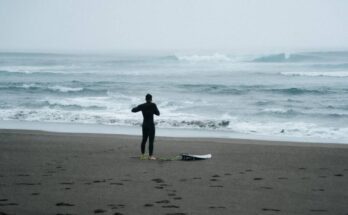But the book was also an effort to understand emerging threats in different areas. In recent years, a big contagion focus has been on misinformation. I think financial crises as well have shaped, and probably will continue to shape, society. And then, of course, other forms of offline contagion, like violence. The aim of the book was to outline some fundamental ideas that can be useful for helping us tackle these different problems—and also show how we can learn from mistakes and things that have been overlooked in different fields. Often, if you’re facing a particular form of contagion, another field might have already dealt with some of these exact situations. An example being the 2008 financial crisis, which was caused in large part by network structures that researchers on sexually transmitted diseases knew about 30 years earlier.
WIRED: You write about your summer working in finance at Canary Wharf in 2008, just when everything was tumbling down. It sounds like people had thought a lot about financial networks in terms of how you could profit from them, but not so much in terms of how they could fail. You write about how, similar to a person trying to avoid an STD, there were multiple forms of network exposure to worry about.
AK: I don’t think, at that point, there was much thinking about how things were linked together. You could have banks, for example, that individually looked well diversified in their portfolios, but they may have all diversified in the same direction. So when an asset crashes, you’ve implicitly got a contagion effect, because all of them are exposed in the same way.
I think that’s when people really began to understand the role of network effects, particularly some of these features where you had these large banks widely connected to create these hub effects, which meant that contagion spread far wider than it might have otherwise. During that period, you also saw a lot of hidden links being created, which meant there were all of these loops of contagion that no one really knew about. No one was quite sure exactly who owed what to whom. Which is one of the reasons why the system froze during that period, because people didn’t know who to trust. It was, I guess, similar to a pandemic spreading through [an airline] flight network, where you’ve got many different routes through which cases can come. If you don’t know what those links are, it’s very hard to understand where the risk is.
WIRED: You left finance after that, but from what you can tell, has that perception changed? Do people have a better sense of those network structures now, having seen how they fail?
AK: There’s been a lot of effort to understand this. But I think with any outbreak, understanding is the first step and doing something about it is the second. There were a lot of efforts by central banks to try to make changes that can improve resilience. So one is obviously things like capital requirements, particularly on banks that are structurally important to the network. But talking to people who work for central banks, as I wrote in the book, I think it is very clear that once you actually start changing the structure of the network, then that becomes much harder to persuade people to do.
So when you’re talking, for example, within banks about “ring fencing,” which essentially cuts the links between the investment side and the retail side, that’s something that people oppose far more strongly. So I think you can end up with a situation, unfortunately, as we often get with infectious diseases, where you can understand how contagion is happening, but actually implementing things that reduce those risky links may come in for a lot of opposition.


